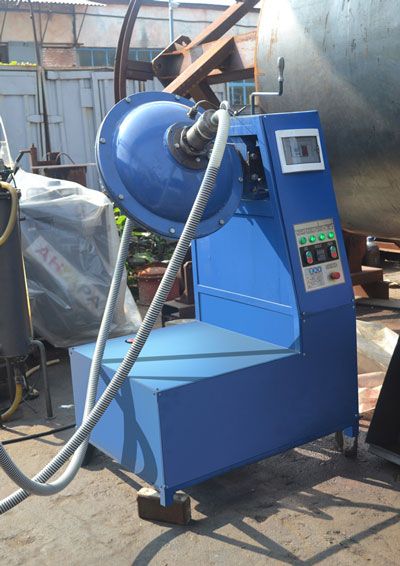
FOB Price
Obtener el precio más reciente25 ~ 35 / Unit
|Minimum Order
Place of Origin:
-
Price for Minimum Order:
Minimum Order Quantity:
1 Unit
Packaging Detail:
Wooden crate
Delivery Time:
2 weeks
Supplying Ability:
20 Unit per Month
Payment Type:
T/T, L/C
Ukraine
Persona de contacto Ms. Oksana
8 Sadovskogo Str, Poltava, Other
Cavitational technology in wastewater treatment process
Â
Â
Cavitation is one such recent technique which has been found to be substantially beneficial in wastewater treatment.
Cavitation can be described as formation, growth and sub-sequent collapse of cavities releasing large magnitudes of energy locally, creating conditions similar to hot spots, and also generating strong oxidizing conditions by way of production of hydroxyl radicals and also hydrogen peroxide.
The efficacy of cavitational reactors can be signiï¬cantly enhanced by combining cavitation with other oxidation processes or by using catalysts and/or additives.
Cavitational reactors can be recommended as pre-treatment methods of waste purification.
By combining conventional and cavitational technologies we can achieve complete purification of industrial wastewaters which contain heavy metal ions, chromium compounds, phenol and also organic and inorganic substances.
Engineers from PC GlobeCore have used the cavitational principle to design AVS unit or Magnetic Vortex Activator.In cavitating water purification devices the extreme conditions of cavitation can break down pollutants and organic molecules.
The main way of AVS unit application is a wastewater treatment. Usage of this unit leads to acceleration of industrial wastewater neutralization, reducing energy and reagents consumption.
Consider the following example “wastewater treatment from phenoland other organic contaminantsâ€.
We have designed new uninterrupted way of wastewater treatment from phenol and other organic contaminants by means of vortex layer (cavitational process). We tested artificial wastewater by Magnetic Vortex Activator AVS. These wastewaters contain similar concentration of phenol, acid and contaminants as real manufacturer’s wastewaters.
Research suggests that Magnetic Vortex Activator provides qualitative treatment of wastewater from phenol at lower costs to compare with other known methods.
Conditions of the wastewater treatmentby AVS unit from phenol concentration 0.***0 g/dm3 and acidity of the medium 5 g/dm3 are as follows:
- oxidizing agents: potassium bichromate (concentration 0.**5 g/dm3); manganese dioxide (concentration 1.***0 g/dm3); potassium permanganate (concentration 0.**1.0 g/dm3);
- wastewater’s temperature -*0–*5 °С;
- oxidization time – 0.**2 seconds.
Â
Â
AVS unit industrial process flowsheet is much simpler in technological execution than contemporary industrial process flowsheets.
According to this process flowsheet phenol wastewater enters to equalizing reservoir which is made to blending and equalization of phenol concentration. Wastewater and potassium bichromate (oxidizing agent with concentration**0–**0 g/dm3) inject to the unit working chamber by means of pump.
Â
Â
Phenol oxidizes in apparatus from where wastewater injects to another vortex layer machine. In the second stage hexavalent chromium regenerates by ferrous sulfate in alkaline medium and at the same time neutralizes and settle Cr3+. As alkaline agent can be used lime, soda or other reagents.
Â
While wastewater treating from phenol, oxidized another organic impurities. Level of formaldehyde content decreases from *0 g/dm3 to *****0 mg/dm3, methanol – from 6.4 g/dm3 to 2.3 mg/dm3, diphenylol propane – from 4.6 g/dm3 to **0 mg/dm3.
Following conditions are recommended to decline the wastewater phenol level:
- Incoming water acidity level - at least equal to **5 g/dm3;
- Wastewater temperature during oxidization -*5 °С (if the wastewater contains gums, temperature should be increased to*5–*0 °С);
- Oxidizing agent consumption – 2.**3.0 weight parts for 1 gram of phenol;
AVS unit productivity: for AVS***0 – to *0 m3/h, AVS***0 – to *5 m3/h.
Application of AVS unit permits to:
- reduce energy consumption in ****5 times;
- reduce oxidizing agent consumption in 1.**2 times
- reduce the working area of waste treatment facilities in 1.**2 times
Â
To get more information about AVS unit don`t hesitate to contact us
via e-mail, phone or skype
The full article on this topic you can find on our website
fuelcleaning.globecore.com
Â
Â
Â
Â
Â
Â